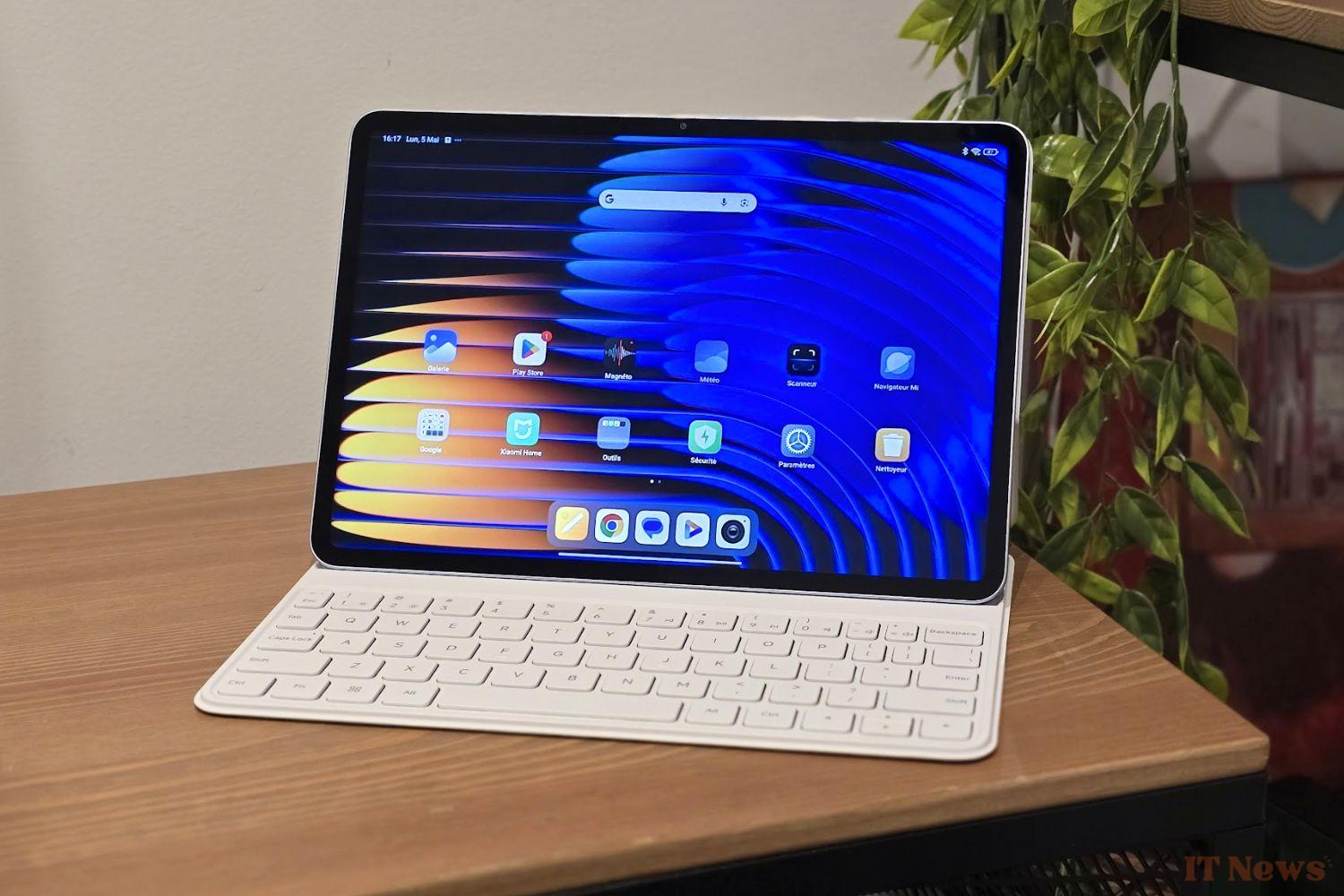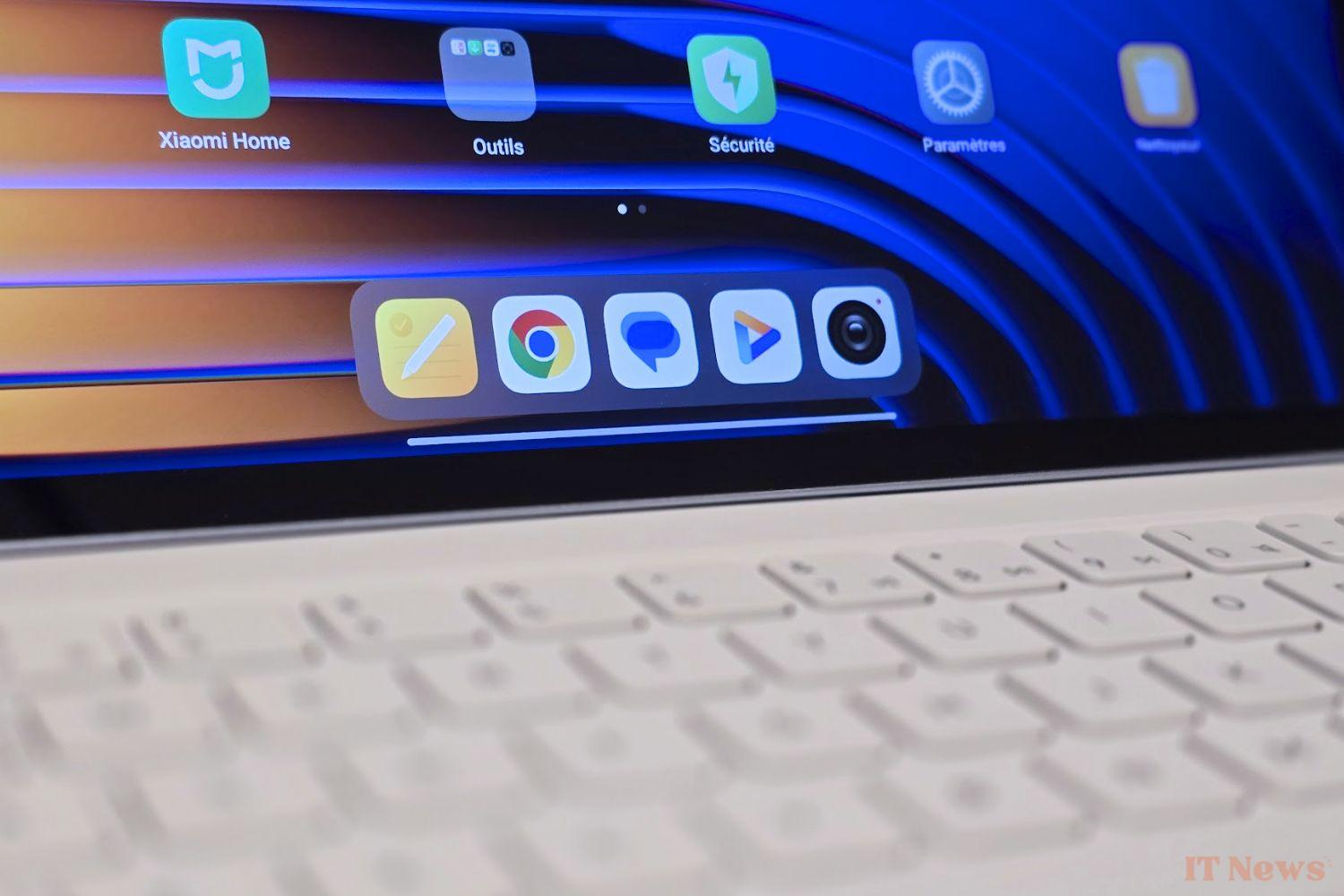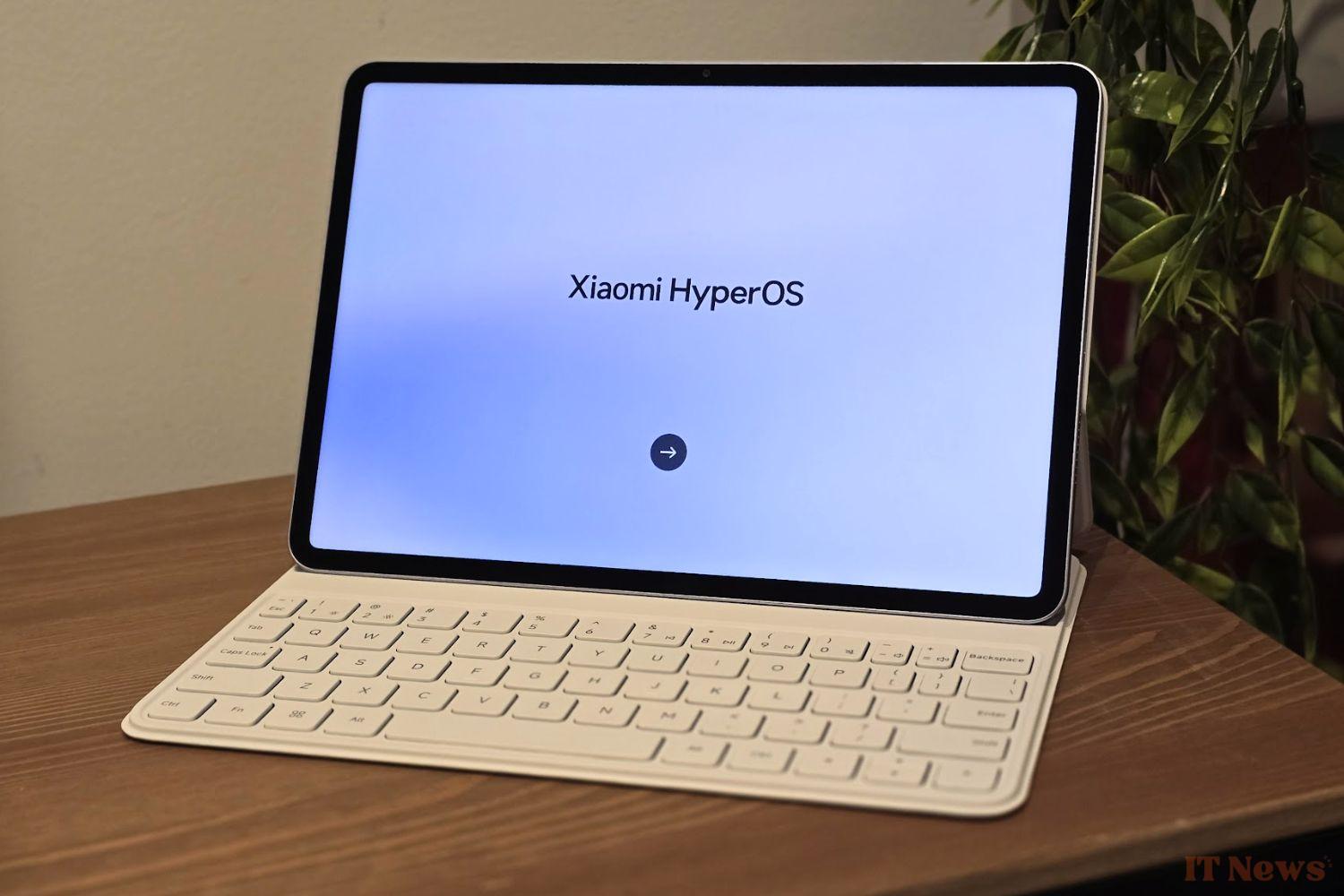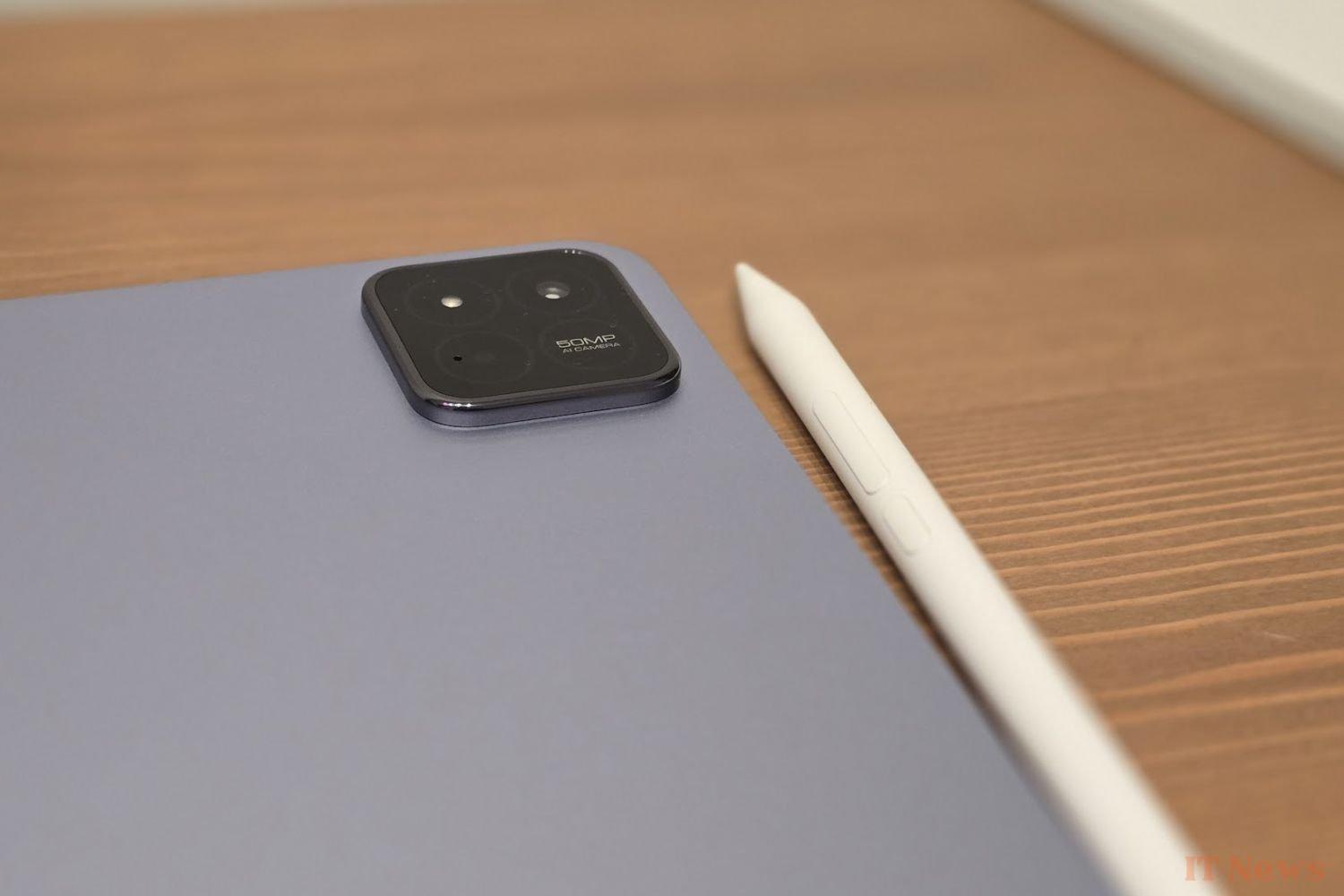Xiaomi's new tablet has some solid arguments under the hood. With its design and Snapdragon 8s Gen 3 chip, the device announced at MWC 2025 propels the Chinese brand's ambitions to the forefront, where it hopes to carve out a niche between the iPad and Samsung's Galaxy Tab S. After establishing itself on the price-performance ratio, can the Chinese giant compete with the high-end market?
Design and screen: all in finesse
The Xiaomi Pad 7 Pro boasts a premium design that has nothing to envy its competitors. Its brushed aluminum chassis, flat edges, and impeccable finishes take inspiration from Apple, and we have to admit that the result lives up to our expectations. Thin (6.2 mm thick) and light (500 g), the tablet is very pleasant to hold. We thank its slightly more compact dimensions than the Pad 6 for a significantly larger panel, which ensures an occupancy rate of nearly 86%, and comfort in all conditions.
On the back, the matte coating limits fingerprints and the camera block is harmoniously integrated. On the edge, the power button acts as a fingerprint reader. Note the absence of IP certification and a 3.5 mm jack, as well as a microSD memory expansion slot. Instead, there is a USB 3.2 port, Bluetooth 5.4 and Wi-Fi 7 compatibility, enough to ensure versatile and efficient use. The tablet is compatible with a stylus and a folio keyboard, sold separately. Enough to complement Xiaomi's ambitions, which would like to replace a laptop with its terminal, while adding a few hundred euros extra to the final bill.
It's undeniable, Xiaomi has taken care with the display of its Pad 7 Pro. We find an 11.2-inch IPS LCD panel with a 3:2 ratio, ideal for productivity as well as multimedia. The definition climbs to 3200 x 2136 pixels, offering a resolution of 345 dpi for sharp and precise images. The colorimetry seems well calibrated with faithful colors and optimized brightness indoors. In full sunlight, readability obviously remains improvable due to reflections, but the variable refresh rate of 144 Hz ensures smoothness in all circumstances.
Performance: Snapdragon 8s Gen 3, the good deal
Under the hood, the Pad 7 Pro features the Snapdragon 8s Gen 3 processor engraved in 4 nm. Usually designed to support high-end but affordable devices, the chip, although slightly behind the Snapdragon 8 Gen 3, ensures satisfactory fluidity in everyday use, supported depending on the version by 8 to 12 GB of RAM and up to 512 GB of storage. The tablet is not spared from some slowdowns when launching a particularly demanding game, but it ensures good multitasking management, especially for office work.
All this is completed by an Adreno 735 GPU, for generally solid graphics performance. With a Bluetooth controller, we managed to run most games without any problems, while movies and series showed no signs of weakness. However, you will need to equip yourself with headphones, as the power of the four integrated speakers struggles to make its voice heard on a daily basis.
Interface and features: AI, obviously
The Xiaomi Pad 7 Pro runs on Android 15 with the HyperOS 2 overlay. Nothing very original there, the Chinese manufacturer keeps it simple and effective, with a relatively clean interface, if we ignore the slew of pre-installed applications. Where the tablet stands out is in its Workstation mode. Once activated, the latter transforms the tablet into a mini-laptop, with floating window management, ideal for productivity. This is where the addition of accessories makes perfect sense: the Pad 7 Pro is compatible with a Focus Keyboard and a magnetic stylus, which charges by induction. No more excuses for working everywhere, all the time.
On the AI side, some very practical tools are worth noting, such as the integration of a magic eraser for photos, and the Gemini assistant, which enriches the user experience. However, we regret the two years (only) of included Android updates, which pale in comparison to most competitors.
Finally, in terms of battery life, the Pad 7 Pro has an 8850 mAh battery, which allows it to last nearly 20 hours in mixed use (mainly web browsing, streaming series and a lot of note-taking). This comfortable battery life is complemented by a 67W fast charge, which allows it to regain 100% battery in 1 hour 24 minutes. Enough to complete a very satisfying everyday experience.
Photo and video: decent, nothing more
Nothing really surprising on this point. The tablet offers a 50 Mpx main sensor (f/1.8), and that's it, contrary to what the four circles on the photo module suggest. Daytime shots are decent, with good color management. In low light, the software processing limits noise without smoothing it out too much, but the vignetting effect is visible, with a fairly obvious lack of precision on the edges of the shot. On the selfie side, the 32 Mpx front camera (f/2.2) offers good results for video conferencing, with a FocusFrame mode to track movements and Always-On presence detection.
Finally, video can be filmed in 4K 60 fps on the back and in Full HD on the front. The lack of optical stabilization and the sometimes haphazard focus should, however, dissuade you fairly quickly. Xiaomi's Pad 7 Pro is not made for taking pictures, like the vast majority of tablets on the market, even premium ones.
Price and availability
The Pro model is available in several colors (blue, gray, and green), with a configuration available in 8+256 or 12+512 GB. As for the price, you will have to pay €529 for the 256 GB storage model and €629 for the 512 GB storage model.







0 Comments